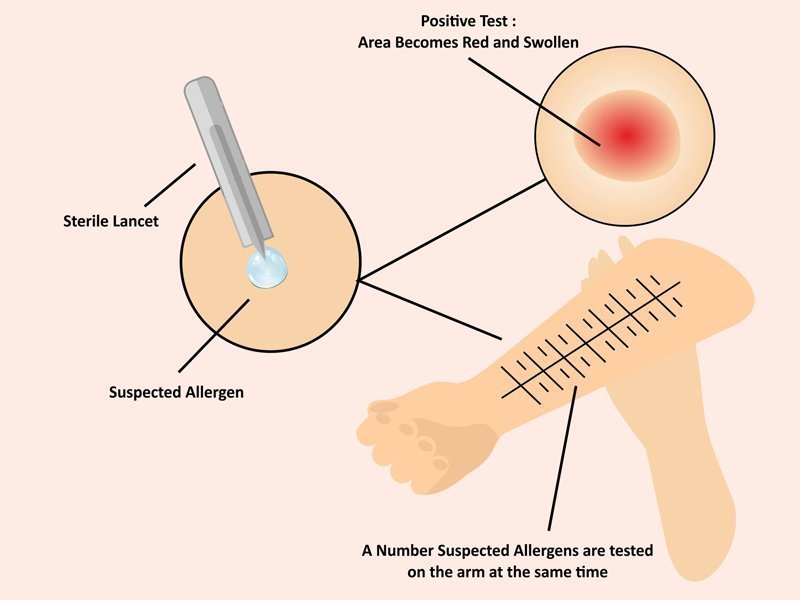
How does a skin prick test work?
The gold standard for allergy testing is as simple as pricking your skin, inserting a small amount of a substance, and waiting to see what happens. If you’re allergic to the substance, a reddish, elevated bump with a red ring around it will appear. This bump may be severely itchy.
What is an allergen?
An allergen is any substance that elicits an allergic reaction. When an allergen is inserted under a layer of your skin in a skin prick test, your immune system kicks into overdrive. It sends out antibodies to defend against what it believes to be a harmful substance.
When the allergen binds to a specific type of antibody, this triggers the release of chemicals, such as histamine. Histamine contributes to an allergic reaction. During this reaction, certain things happen in your body:
- Your blood vessels widen and become more porous.
- Fluid escapes from your blood vessels, which causes redness and swelling.
- Your body produces more mucus, which leads to congestion, runny nose, and teary eyes.
- Your nerve endings are stimulated, which causes itching, rash, or hives.
- Your stomach produces more acid.
Skin prick testing techniques
Skin prick tests are usually performed on the inner forearm. Any number of allergens can be tested, as few as 3 or 4 or up to about 25 allergens. The following is a brief overview of how the test is performed.
- Clean arm with soap and water or alcohol.
- The forearm is coded with a skin marker pen corresponding to the number of allergens being tested. Marks should be at least 2 cm apart.
- A drop of allergen solution is placed beside each mark.
- A small prick through the drop is made to the skin using a sterile prick lancet. A new lancet must be used for each allergen tested.
- Excess allergen solution is dabbed off with a tissue.
- Observe skin reactions – if a reaction occurs it should do so within 20–30 minutes.
